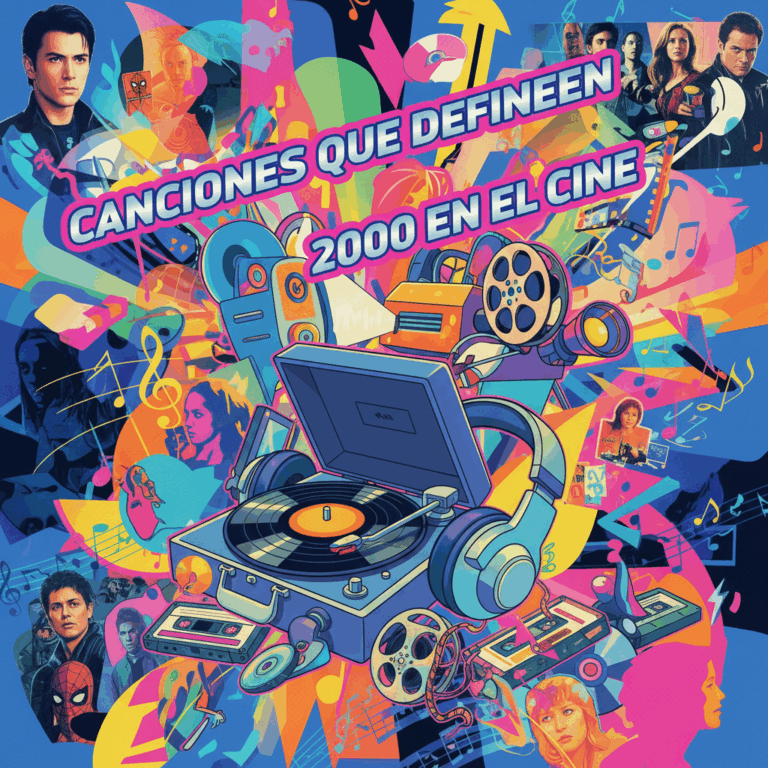Key composers of film soundtracks in 2000
The 2000s were marked by musical creativity in film, where composers created unforgettable soundscapes. Their works marked a turning point in the history of cinema.
Among the protagonists of this change were figures who defined genres and styles, confirming themselves as essential to understanding contemporary film music.
Their soundtracks added emotional depth and helped build cinematic universes that still resonate in popular culture.
Howard Shore and the epic of The Lord of the Rings
Howard Shore cemented his status as a creative giant thanks to The Lord of the Rings trilogy. His epic music became the essence of Tolkien's universe, transcending the screen.
With powerful choirs and recurring thematic motifs, Shore managed to give voice to fantastic worlds, achieving an immersive and exciting atmosphere that captivated critics and audiences.
His work was recognized with numerous Oscar awards, demonstrating the quality and historical impact of his composition within fantasy cinema.
John Williams and the iconic themes of Harry Potter
John Williams lent his mastery to the Harry Potter saga, creating melodies that became sonic emblems of magic and adventure. “Hedwig’s Theme” is an instant classic.
His songs not only accompanied the images, but also defined the musical identity of the entire saga, establishing a lasting emotional bond with the audience.
Williams' ability to combine nostalgia and mystery reaffirmed his status as one of the most influential composers in contemporary cinema.
Musical impact on blockbusters and independent films
Music in the 2000s played a fundamental role in both big blockbusters and independent films, adding essential emotional layers to each story.
This duality allowed for the exploration of diverse and original sounds that enriched the viewer's audiovisual experience, setting a trend in the film industry.
The decade was characterized by a creative balance, where the majesty of the epic coexisted with sound experimentation and sensitivity in more intimate proposals.
Hans Zimmer: majesty and darkness in Gladiator and The Dark Knight
Hans Zimmer left an indelible mark with the Gladiator soundtrack, creating a majestic atmosphere that reflected the grandeur and melancholy of the Roman Empire.
In The Dark Knight, alongside James Newton Howard, Zimmer revitalized the superhero genre with intense and dark sounds, which heightened the tension of the plot.
His ability to combine powerful orchestrations with electronic elements defined a unique sound, which remains a reference in epic and dramatic compositions.
Gustavo Santaolalla and Jonny Greenwood in independent cinema
Gustavo Santaolalla brought profound emotions with the music of Brokeback Mountain, winning an Oscar for its minimalist and authentic sensibility.
Jonny Greenwood, guitarist of Radiohead, revolutionized independent cinema with experimental sounds and dissonant strings in There Will Be Blood, giving voice to the disturbing.
Both composers demonstrated that sound innovation and subtlety can create powerful emotional universes in films outside the commercial circuit.
The sound revolution in superhero movies
The 2000s redefined superhero music, moving from traditional melodies to darker soundtracks with electronic textures that reflected internal conflicts.
Composers like Zimmer infused the genre with new energy, using modern resources that broke with clichés and expanded audiovisual storytelling.
This musical trend influenced the psychological character of the heroes, making the films more complex and resonant for diverse audiences.
Use of popular songs in soundtracks
The use of popular songs in film soundtracks in the 2000s marked a significant shift, giving films a unique sonic identity and connecting with different audiences.
These soundtracks not only complemented the visual narrative, but often defined the style and atmosphere of the films, enriching the viewer's experience.
The careful selection of pre-existing songs and alternative genres became a key tool for conveying emotions and cultural sensitivity in film.
Pre-existing songs that defined films like 500 Days of Summer and School of Rock
500 Days of Summer stood out for using songs by artists such as The Smiths and Regina Spektor, achieving a soundtrack that reflected the melancholy and humor of the film.
School of Rock paid homage to classic rock with iconic songs that complemented the irreverent and fun tone of the film, becoming a musical symbol of the movie.
These soundtracks used existing songs to create an immediate emotional connection with the audience, reinforcing the cultural context of each story.
The role of folk and alternative music in O Brother! and Dancer in the Dark
O Brother! used folk and bluegrass music as a narrative axis, revitalizing traditional genres and capturing the essence of the story set in the deep south of the United States.
Dancer in the Dark, with Björk as composer and protagonist, presented an innovative proposal that combined alternative music with film dramaturgy, unique of its kind.
Both films demonstrated the power of folk and alternative music to connect with audiences and bring authenticity to cinematic storytelling.
Legacy and musical diversity of cinema in the 2000s
Film music from the 2000s reflects a time of great richness and diversity. Soundtracks captured the spirit of the era and offered new forms of artistic expression.
This decade redefined the role of music in film, highlighting the importance of compositions both in narrative and in the construction of cultural identities.
There was also evidence of an evolution in genres and styles, paving the way for future musical productions in the audiovisual industry.
Capturing trends and sensibilities through soundtracks
The soundtracks of this decade accurately reflected the prevailing musical and emotional trends. They captured the audience's sensibilities and created unique atmospheres.
Composers combined classical techniques with modern sounds, adapting the scores to the narrative needs and the cultural evolution of the audience.
Thus, music in film became a vehicle for expressing social and emotional tensions typical of the 2000s, enriching the cinematic experience.
Contribution of composers and artists to the evolution of musical cinema
Figures like Howard Shore, Hans Zimmer, and Gustavo Santaolalla transformed musical cinema with their innovative and personalized approaches in each work.
Furthermore, the incorporation of popular songs and alternative genres broadened the sonic and emotional spectrum of cinema, connecting with new audiences.
This process of innovation consolidated music as a central element in cinematic narrative and aesthetics, leaving a lasting legacy.






